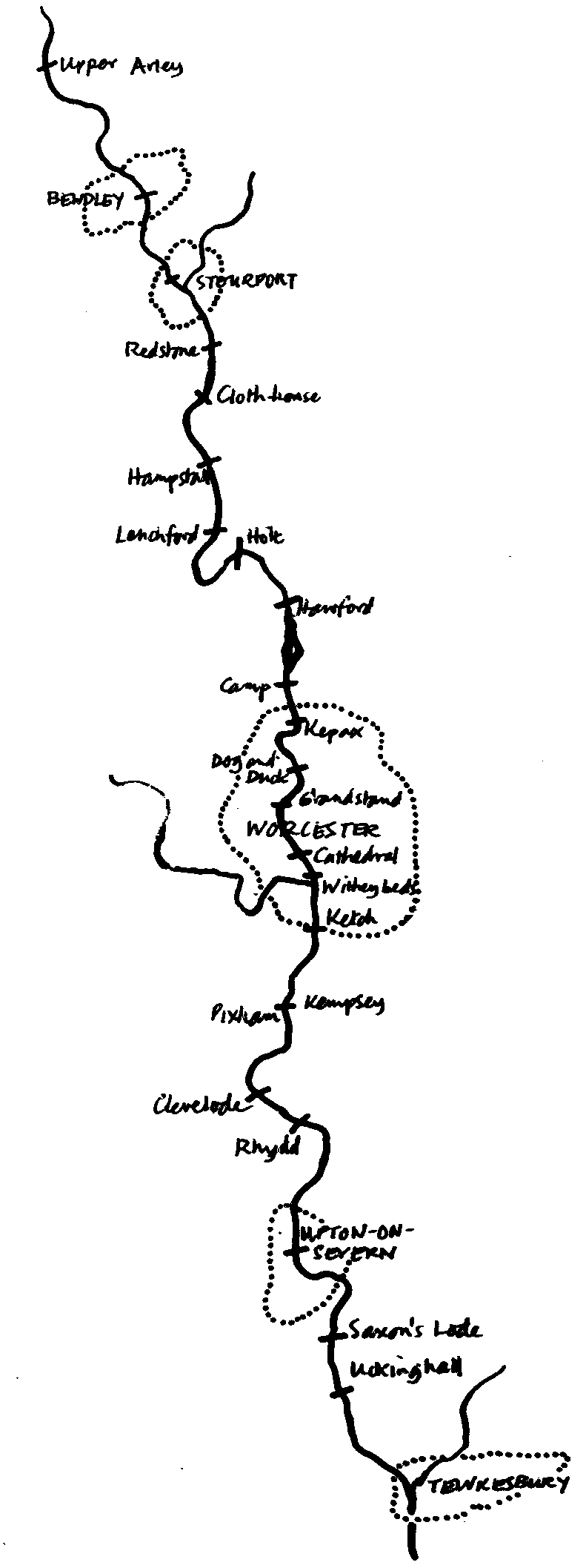
Articles on this site
Worcester Writers' Circle
Monday
Tuesday
Wednesday
Friday
Saturday
Sunday
 |
Links to other history
sites Articles on this site Worcester Writers' Circle | |
| Something new every day Monday Tuesday Wednesday |
Thursday Friday Saturday Sunday |
|
In the 19th century, the Severn Commissioners granted licences annually to operate a ferry, for the ferry was a right of way and the ferryman had to conform to the regulations and ply his boat between the hours of sunrise and sunset.
Although most ferries were in operation until the Second World War, Information concerning them is difficult to find. Mrs. Berkeley, in 1932, wrote a valuable paper to the Worcestershlre Archaeological Society on the Ferries of Worcestershire for, although most were still operating at that time, It was obvious that, with the more general use of the motor car, the ferries would be difficult to maintain economically.
I have included in this account some of the older crossings of the Severn, for even before the ferries came into existence, the crossings at low water, on a hard bar of rock, were undertaken by prehistoric man and his animals. Before the building of the locks and weirs, the tide came daily to Worcester and beyond but, because of these fords, navigation at low water became difficult if not impossible. At an Admiralty Inquiry of 1849, John Burton, a trowman of Ironbridge, reported that in the 28 miles of river from Coalbrookdale to Stourport there were 54 fords; from Stourport to Worcester there were 11, or one every mile and from Worcester to Gloucester there were 15 or 16. Not all these fords were used by travellers, but many were and, when we find roads or trackways leading to the river at these places, we can be sure that, in days past, the crossing was well used.
Few of the ferry houses remain on the river bank but the watermen’s inns from which some of the ferries were operated mostly still exist and, in the summer months, are still alive with laughter and song. This account starts with the most northerly of the Worcestershire ferries, that of Upper Arley, and ends at Uckinghall, in the parish of Ripple, below Upton.on-Severn.
Mr Gwilliam has kindly donated the script of this book in aid of the Cathedral Ferry Nov ‘82. A donation of £1 to Worcester Cathedral Ferry Fund for printing articles from this set is suggested.

The River Severn in Worcestershire, by Marina Duffell
River Severn Tales, by Chris Witts - the premier River Severn site